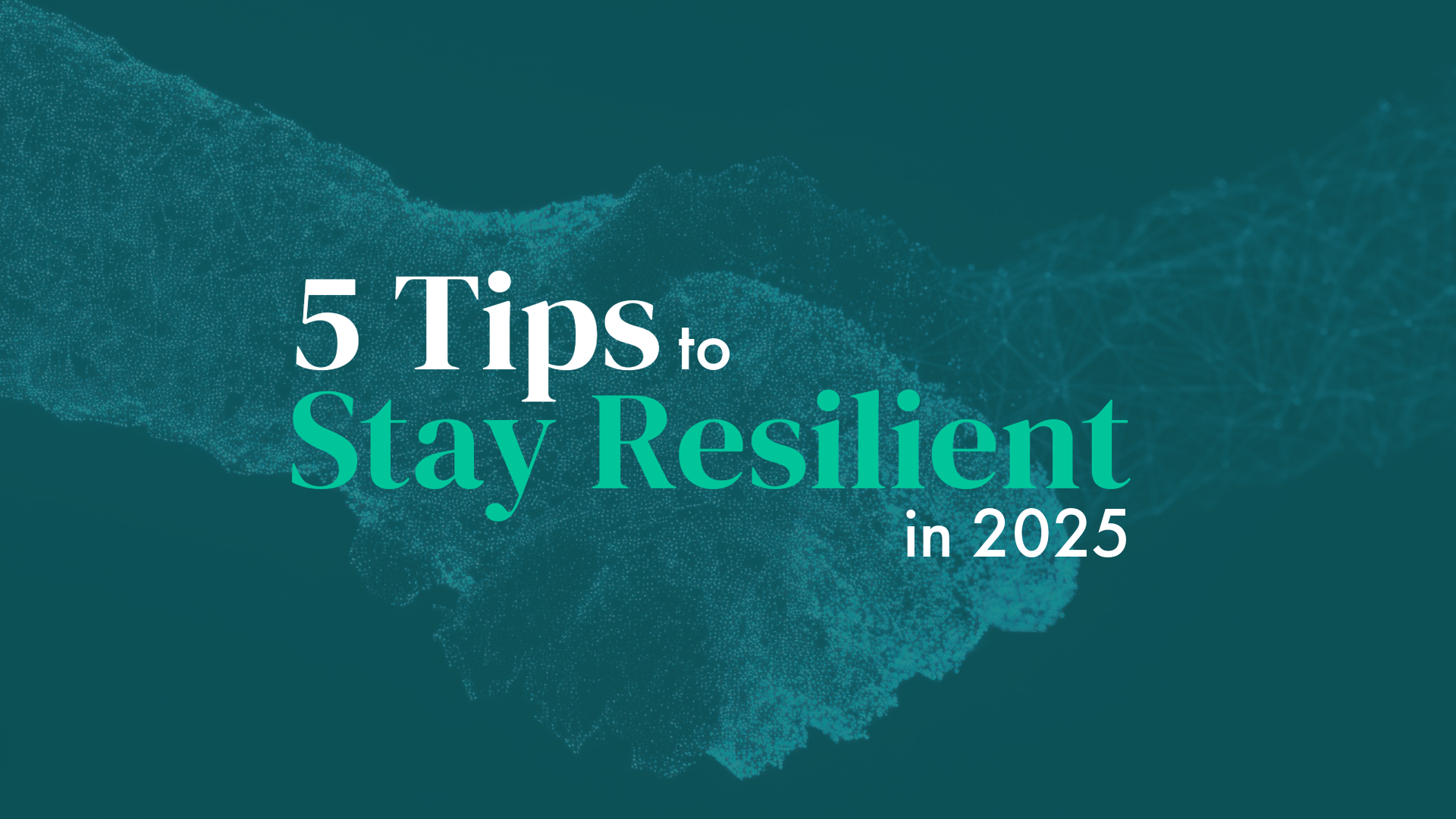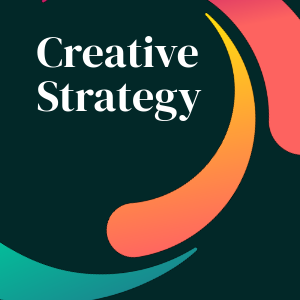
Once seen as a soft skill, resilience is now fundamental to how businesses operate and adapt. Resilience used to be about bouncing back. In 2025, it’s about building systems that can withstand and adapt to continuous change.
After years of rolling disruption, from the pandemic and political polarisation to economic uncertainty and rapid technological change; many organisations now operate in a state of continuous volatility. For senior leaders, resilience is no longer just about surviving the shocks. It’s about designing systems that can anticipate, absorb and adapt to them. This includes everything from brand frameworks and communication strategies to internal culture and external storytelling.
Let’s begin by acknowledging the obvious: if you’re feeling uncertain right now, you’re not alone.
We want to take a moment to reassure fellow agencies and creative leaders that the current state of unease is not only understandable, but entirely rational. The world in 2025 is in a period of prolonged and layered disruption. Just consider the broader context:
- Economically, global growth is slowing. The IMF recently revised its forecast down from 3.2% to 2.8%, warning that trade flows are becoming more unpredictable.
- Geopolitically, conflicts in Europe and the Middle East, alongside rising tensions between the US and China, have created what some are calling the most volatile global environment in generations.
- Politically, countries that comprise 60 percent of the world’s economic output had general elections in 2024. New governments create change.
- Technologically, the rise of generative AI continues to disrupt industries, reshaping how we work, communicate, and compete – often faster than leaders can respond.
So, where does that leave us?
Against this backdrop, businesses are under pressure from all sides. There’s the constant need to deliver, growing uncertainty about demand, and constant pressure to adapt.
This blog is about resilience: what it really means, the traits resilient brands share, and five practical ways to stay resilient in 2025.
The effect of volatility on marketers
In 2025, many marketing leaders are under increasing pressure, and it’s easy to understand why.
A recent report from Gartner shows that, on average, companies are allocating just 7.7% of their total revenue to marketing. That’s a relatively small amount when you consider everything marketing is expected to do: raise brand awareness, drive sales, improve customer loyalty, and help the business grow.
To make matters more difficult, some companies are cutting budgets further during the year, often unexpectedly, in response to changing financial priorities. These cuts mean that marketing teams are being asked to do more with less.
Because of this budget pressure, many CMOs feel they need to show quick results, especially to please finance departments or boards that want to see a return on investment fast.
The pressure to prove short-term ROI can come at the cost of long-term brand resilience.
The Risks of Cutting Back on Advertising
And when short-term wins take priority, brand advertising is often the first line item to be cut. It’s seen as expendable — a nice-to-have rather than a need-to-have. But that thinking can be dangerously short-sighted.
It might seem like pausing brand campaigns or reducing advertising spend is a smart way to save money, but the data says otherwise.
- Brands that reduce advertising can see sales drop by 16% within the first year.
- If that reduction continues, sales may fall by up to 25% in the second year.
- Even being off-air for just six months (meaning not running brand ads on TV, radio, online, or elsewhere) can cause a 40% drop in brand awareness
When people stop seeing or hearing from a brand regularly, they forget about it. And once awareness drops, it becomes more expensive, and takes longer, to rebuild that connection with customers.
Instead of pushing forward as if nothing’s changed, now is the moment to pause and rethink. Are the strategies helping us to stay resilient? Especially given tighter budgets where marketing spend needs to work harder.
What Is Resilience and Why Does It Matter?
Understanding Resilience in Business
In the words of McKinsey:
But what exactly does that mean?
Resilience, in a business context, is an organisation’s ability to withstand unexpected challenges, adapt quickly, and come out stronger than before. It’s not just about surviving tough times; it’s about using them as a catalyst for learning, improvement, and future readiness.
Think of resilience as a company’s internal toolkit for dealing with change, whether that’s a global crisis, a sudden shift in customer behaviour, or internal disruption. It’s the ability to remain calm, focussed, and capable, even when things don’t go to plan.
What Resilience Means for Marketing and Brand Leaders
For brand, marketing and communications leaders, resilience means more than just staying afloat; it’s about helping the brand remain relevant, consistent and visible, no matter what’s happening around it.
It’s about making sure your brand:
- Stays relevant when audience needs and behaviours change.
- Stays consistent when public scrutiny or internal pressure tests your values.
- Stays visible even when budgets are cut or media noise increases.
Why Resilience Drives Long-Term Success
Resilience isn’t just a nice-to-have. It’s a proven driver of long-term performance.
According to a study by the Boston Consulting Group (BCG):
In other words, how a company handles disruption today has a direct impact on how well it performs tomorrow. Companies that can respond well to tough situations are more likely to recover faster, adapt more effectively, and ultimately outperform those that hesitate or falter.
Further research by Accenture supports this view:
These companies aren’t just reactive; they’re built to evolve. They treat change as an opportunity, not just a threat.
What Sets Resilient Brands Apart?
- Financial out-performance: They don’t just protect value, they amplify it, consistently outperforming competitors over time.
- Faster recovery: Resilient organisations rebound more quickly during upheaval, regaining momentum while others are still regrouping.
- Strategic advantage: They treat change as an opportunity, adapting faster and more confidently, rather than reacting defensively.
5 Tips for Organisations to Stay Resilient in 2025
Tip 1: Build Brand Resilience with a Clear Identity and Narrative
In times of change, it’s not the loudest or the fastest brands that endure, but the ones with a clearly defined brand identity and a coherent story.
Resilient brands have a strong identity and narrative. Brands with a straightforward story and purpose can pivot tactics without losing themselves. When the ground is shifting (be it economic swings or AI innovations), an interesting brand story acts as a north star, keeping stakeholders (customers, employees, investors) emotionally connected.
Storytelling and brand identity are often underestimated as soft assets. But in reality, they are vital resilience tools. A brand that consistently communicates its purpose, values, and reason for being is far more likely to bring its audience with it through periods of uncertainty. In difficult times, people naturally gravitate toward brands they trust. By reinforcing why your brand exists and how it’s helping in an era of uncertainty, you build trust that can buffer against short-term bumps.
At Content Creatures, we call this unearthing truth – a central part of The BetterStory Method. Unearthing truth helps build brand resilience from the inside out. It’s the process of clarifying not just what your brand does, but why it exists, the value it offers, and the belief that drives everything it communicates and delivers.
When teams are grounded in this kind of brand truth, a clear identity and shared sense of purpose, they can respond to uncertainty with greater clarity and confidence.
This is what keeps resilient brands upright when others wobble. They don’t chase trends blindly or panic under pressure because they know who they are. And that identity gives them the strength to evolve with change, rather than crumbling under it.
Is your brand story strong enough to carry you through uncertainty?
Resilient brands know who they are and why they exist. Let’s talk about what that could look like for your team.
Tip 2: Practice Transparency to Build Trust
In uncertain times, trust is one of your brand’s most valuable assets, and transparency is how you earn it.
Resilient brands don’t go quiet when things get difficult. They communicate clearly, openly, and honestly, whether that’s with customers waiting on updates, employees concerned about change, or stakeholders needing clarity. Silence creates space for speculation. As Edelman’s Trust Barometer found, if a brand doesn’t explain its actions on key issues, most consumers assume it’s doing nothing or hiding something. They also found that inauthenticity causes 51% of consumers to disengage.
Instead, transparency and authenticity build confidence. It shows you’re aware, in control, and acting with integrity.
What this looks like in practice:
- Let employees know what’s happening and why, especially during change or uncertainty.
- Share progress publicly on big commitments like sustainability or DEI. Even if things aren’t perfect, being open builds credibility.
- If plans shift, or issues arise, explain the reasoning clearly and respectfully.
Trust also comes from competence and consistency. Resilient brands follow through on what they say, and over time, that track record earns loyalty. When customers and teams trust your brand deeply, they’ll stick with you in a crisis instead of looking for a safer option.
Tip 3: Use Future-Focussed Storytelling to Inspire and Align
Resilient marketing doesn’t just react to what’s happening; it communicates where the brand is going.
This is where future-focussed storytelling comes in.
Instead of simply telling people what your brand does today, ask:
What future are we helping to create? What change do we want to lead or contribute to – in people’s lives, in our category, or in the wider world?
At Content Creatures, we help clients explore what we call Imaging Better – a clear, credible view of the transformation their brand can help bring about. This might be social, emotional, environmental, or cultural, but it must be authentic and aligned to your brand’s purpose.
When your brand story is anchored in a bigger future, it becomes:
- More resonant: because it taps into collective hopes or needs.
- More energising: because it gives teams something meaningful to work towards.
- More resilient: because it frames short-term setbacks as part of a longer journey.
Tip 4: Strengthen Team Resilience and Culture
Brands don’t weather storms – people do. Your team’s resilience is the foundation of your brand’s resilience. Building a resilient team means fostering psychological safety, cohesion, and adaptability. Ensure your workplace culture allows people to speak up, take smart risks, and support each other. Google’s Project Aristotle found that psychological safety was the linchpin of its most successful, resilient teams.
When teams feel safe:
- Ideas flow more freely.
- Mistakes become learning opportunities.
- Feedback is easier to give and receive.
- People stay engaged, even under pressure.
How to build a resilient team?
A resilient team is built on trust, clear communication, and a shared sense of purpose. This is essential in hybrid and cross-functional environments, where misalignment and silos can slow progress.
To build team resilience:
- Encourage open, honest dialogue.
- Promote cross-functional collaboration.
- Invest in adaptability training (e.g. scenario planning, resilience workshops).
- Support employee wellbeing, not just performance.
- Lead with clarity and composure; resilience starts at the top.
- Keep your team anchored in purpose. A resilient culture is one that knows why it matters. When people feel connected to a mission bigger than their daily tasks, they’re more motivated to push through difficult moments.
Tip 5: Embrace Anti-fragility – Grow Stronger Through Disruption
Anti-fragility is a concept reshaping how smart marketing teams respond to change. Coined by risk analyst Nassim Nicholas Taleb, it describes systems that don’t just withstand stress; they get better because of it. They evolve through volatility, becoming more adaptive, creative, and effective after each disruption.
In today’s environment, resilience is no longer enough. Forward-thinking brands are shifting towards anti-fragility, which is about bouncing forward. Anti-fragile brands treat disruption as fuel for growth. Instead of returning to “how things were,” they ask: how can we use this to improve?
For marketing teams, anti-fragility means using disruption to their advantage. Instead of treating a failed campaign as a setback, you treat it as a chance to learn what didn’t work and why. You test ideas regularly, knowing that minor risks can lead to useful discoveries. You stay flexible, not tied to one plan, so you can quickly adjust when things change. And you treat new challenges, like shifts in customer behaviour or emerging tech, as opportunities, not threats.
Case Studies: Brands Demonstrating Resilience
Theory is one thing, but what does resilience look like in action?
Nike, Building Resilience
Facing pandemic-era disruption, Nike responded decisively by accelerating its Consumer Direct Acceleration (CDA)strategy – a digitally empowered phase focussed on driving long-term growth and profitability through direct-to-consumer (DTC) sales via digital channels.
Rather than pausing or playing it safe, Nike used the crisis as a catalyst for transformation. It significantly increased investment in its digital infrastructure, investing significantly in its apps, including SNKRS and Nike, as well as its website to drive engagement, demand, and online sales. These efforts ensured Nike stayed connected with its audience – wherever they were.
By 2022, this approach paid off: Nike Digital, its ecosystem of digital platforms, accounted for 26% of total company revenue.
At the same time, Nike remained firmly rooted in its brand identity. It continued to deliver bold, values-led campaigns that addressed social issues such as equality, inclusion, and representation – reinforcing emotional trust and cultural relevance. This wasn’t surface-level messaging; it was authentic storytelling tied to Nike’s core belief: championing human potential.
Nike’s approach reflects anti-fragility in action. Rather than returning to business-as-usual, the company treated disruption as fuel for reinvention, evolving how it sells, what it says, and how it shows up for its audience. At a time when many brands hesitated, Nike leant into change – and emerged stronger, sharper, and better aligned with its future.
Conclusion
In times of uncertainty, it’s tempting to focus only on short-term tactics. But true resilience doesn’t come from reacting faster. It comes from knowing what your brand stands for and communicating that consistently, inside and out.
At Content Creatures, we help marketing and communications teams uncover the deeper truth behind their brand – the purpose, values, and belief system that make it meaningful to customers, employees, and stakeholders. Then we bring that to life through strategic storytelling, clear messaging frameworks and motion-led content that connects.
Through our BetterStory™ Method, we help brands uncover their truth and express it in ways that build resilience, relevance, and trust. Let’s talk about what that could look like for your team.






